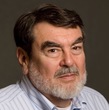Exploring a Hostile Environment: Space
The Translational Research Institute for Space Health (TRISH) funds novel research that advances human performance in the most hostile environment known to man: deep space. To do this, we address the challenges astronauts face: confined spaces, availability of fresh food, limited medical supplies that may degrade in space.
Previously Funded Investigations

Research: Space-Feasible Body Composition and Body Shape Analysis for Long Duration Missions
Institution: University of Hawaii, Honolulu, Hawaii
Project dates: Sept. 1, 2019 – Aug. 31, 2021
NASA Risk Addressed: Risk of adverse health outcomes and decrements in performance due to inflight medical conditions (Medical)
Project: The project aims to monitor frailty risk using 3D optical (3DO) scans that have adjustments for fluid redistribution. 3DO models accurately estimate bone and body composition but lack space acclimation experience. The team will perform studies to select hardware, algorithms, and augment models with microgravity analogs, and conclude with making a space-feasible prototype for microgravity testing during parabolic flights.
View status.

Research: Development of Next-Generation Probiotics to Combat Mental Health Risks for Space Travel
Institution: Holobiome, Inc.
Project dates: Nov. 1, 2020 – Oct. 31, 2021
NASA Risk Addressed: Risk of adverse cognitive or behavioral conditions, risk of adverse health outcomes and decrements in performance due to inflight medical conditions, and risk of adverse health effects due to host-microorganism interactions (BMed/Medical/Microhost)
Project: Holobiome is developing next generation probiotics, derived from the healthy human microbiome, to address major global health problems. Holobiome will explore utility of these strains to solve a major challenge for the intergalactic advancement of humanity: the mental health of deep space explorers.

Research: Will use of long-acting, reversible contraceptives mitigate bone loss in female rats during simulated exploration class missions?
Mentor: Susan Bloomfield, Ph.D.
Institution: Texas A&M University, College Station, Texas
Start Date: Jan. 1, 2018
End Date: Dec. 31, 2020
Study Type: Ground study
NASA Risk Addressed: Risk Of Early Onset Osteoporosis Due To Spaceflight (Osteo)

Research: Personalizing prebiotic therapies for astronauts' gut microbiota
Institution: Duke University, Durham N.C.
Start date: Oct. 1, 2017
End date: Sept. 30, 2019
Grant Mechanism: Single PI Grant
Study type: Ground study
NASA Risk Addressed: Risk of Performance Decrement and Crew Illness due to an Inadequate Food System
Problem Addressed: Deep space missions will not be able to carry large amounts of payload (including food). Dietary carbohydrates nourish human gut bacterial communities (microbiota) that resist pathogens, regulate gastrointestinal physiology, and train the immune system. This project enables the reduction of food mass and improves astronauts gut’s microbiota.
Major Aim of Project: To develop a platform for individualizing prebiotic treatments that could be used to enhance gut bacterial metabolism in astronauts. Customizing prebiotic treatments would also minimize the amount of unused dietary carbohydrates ingested by astronauts, reducing spaceflight payloads.

Research: Co-Optimization of Duckweed Biomass, Nutritional Quality & Input-Use Efficiency
Institution: University of Colorado, Boulder, Boulder, Co.
Start date: Jan. 1, 2019
End date: Dec. 31, 2020
Grant Mechanism: Single PI grant
Study type: Ground study
NASA Risk Addressed: Food
Problem Addressed: On a mission to explore deep space, food will have to be stored for long periods, affecting texture and appearance as well as potentially decreasing nutrient content. The capability to produce fresh food to supplement stored food items would provide welcome texture, aroma, flavor, variety, and nutrients.
Major Aim of Project: This project evaluates small floating duckweeds as a multipurpose edible plant for spaceflight applications.

Research: Retired Astronauts Medical Data Repository (RADAR): a Feasibility Project
Institution: Texas A&M University, College Station, TX
Start date: June 1, 2019
End date: May 31, 2020
Grant Mechanism: Focused Investigation Project
NASA Risk Addressed: Medical, Cancer, Degen /CVD
Major Aim of Project: Understanding long-term impacts of space exploration on human health requires tracking crewmember medical status well after retirement. Lifetime Surveillance of Astronaut Health (LSAH) collects data on United States and Canadian crewmembers, but does not collect data on other international crewmembers. To reduce risk, the sample size must be enlarged. Retired Astronauts Medical Data Repository (RADAR) will investigate the feasibility for developing an international retired astronaut data base. The long-term goal of this work is to create a retired astronaut medical data repository housed at Texas A&M University-College Station to capture data that will otherwise be lost and to greatly increase the “n” for future research. Ultimately, data for all retired crew in this repository would be made available for use by qualified investigators to study the long-term health impact of exposure to the space environment in order to mitigate health risks for future crew.

Research: In Situ Expression Analysis of Therapeutic Microbes with Gastrointestinal Devices
Institution: Massachusetts Institute of Technology
Start date: Aug. 1, 2019
End date: July, 31, 2021
Grant Mechanism: Postdoc
Study type: Ground study
NASA Risk Addressed: Pharmaceutical
Project: Genetically engineered therapeutic microbes (synthetic microbes) represent a promising approach to modulating the gut microbiome and enhancing human health. The specific aims of his proposal are to:
- Develop a device that can stably localize microbes in the GI tract
- Deploy this device in swine to profile the set of microbial genes that are expressed and repressed in each GI location.

Research: Genetically Minimizing Non-Edible Portions of Plants for Space Flight Applications
Institution: University of California, Riverside, Riverside, Calif.
Start date: Jan. 1, 2019
End date: Dec. 31, 2020
Grant Mechanism: Single PI grant
Study type: Ground study
NASA Risk Addressed: Food
Problem Addressed: Plants on space expeditions can provide a fresh source of food and nutrients, carbon dioxide uptake capacity, and behavioral health benefits to crew members. Yet so far, variety of plants grown in space is limited. Increasing the diversity of plants suitable for space flight would increase nutritional opportunities and increase the diversity of fresh food options available for crew members.
Major Aim of Project: This project aims to develop space-friendly traits in a breed of tomato to increase production of small-sized, edible biomass.

Research: Gastrointestinal devices for long-term in situ delivery of therapeutic microbes
Institution: Massachusetts Institute of Technology, Cambridge, Mass.
Start date: Nov. 1, 2017
End date: Oct. 31, 2019
Grant Mechanism: Single PI grant
Study type: Ground study
NASA Risk Addressed: Risk of Performance Decrement and Crew Illness due to an Inadequate Food System
Problem Addressed: Astronauts during spaceflight are generally not optimally nourished. Dietary intake tailored to the astronauts’ needs might be beneficial for their immune system function. This project builds upon previous findings from a Charles Stark Draper Prize recipient (Dr. Langer) that could be used to enhance immune and GI function.
Major Aim of Project: To develop a polymeric (plastic) device that is retained in the GI tract for an extended time interval (1+ years) to host, protect and administer genetically modified therapeutic microbes. It minimizes personnel, equipment and space requirements during spaceflight since it can be administered and quality checked during a pre-flight period.

Research: Cell-free production of pharmaceutical-grade biologics
Company: Synlife, Inc.
Start date: May 1, 2019
End date: April 30, 2020
Study type: Ground study
Project: Biomolecules, such as proteins, carbohydrates, and metabolites, hold promise as treatments and diagnostic markers for a wide variety of diseases, including cancer, diabetes, and Alzheimer’s disease. However, generating the appropriate biomolecules currently requires numerous chemicals and cell-culture systems. Synlife, Inc. proposed developing freeze-dried, cell-free extracts that can generate active biomolecules upon adding only water and DNA. Further, their kit would allow purification of these biomolecules to a level safe for human injection. This system will be low cost, highly portable, and have a long shelf life.

Research: Creating surgical capabilities for exploration space flight
Institution: University of Louisville, Louisville, Ky.
Start date: Oct. 1, 2017
End date: Sept. 30, 2019
Grant Mechanism: Single PI grant
Study type: Ground study
NASA Risk Addressed: Medical
Problem Addressed: Due to the difficulty of resupply from Earth and the long communication delay during deep space missions, astronaut medical and surgical care will likely need to be autonomous. It is possible, that surgical procedures may be required to treat trauma or disease. This project enables the surgical capability to address such medical scenarios.
Major Aim of Project: To develop just-in-time surgical training, optimize the supply logistics of manifested versus 3D printed surgical instruments, and modify the NASA Robonaut 2 to add responsive movements for assistance during surgery. This project focuses on an example surgical procedure (appendicitis). Training material utilizing virtual or augmented reality will be developed and evaluated for effectiveness.

Research: Feasibility Study for Potential Radiation Analog
Institution: University of Houston, Houston, Texas
Start Date: Jan. 1, 2019
End Date: Dec. 31, 2019
Study Type: Ground study
NASA Risk Addressed: Degen/ CVD
Project: Space travel exposes astronauts to high levels of radiation, which can increase the risk of developing cancer and other diseases. One parameter of interest is the potential for “dose-rate” effects. That is examining the potential effects of short-term chronic exposures to higher dose-rates may have unrecognized short-term, or even different long-term effects. The Dose-Equivalent rates experienced within aircraft at nominal cruise altitudes in polar-regions is comparable to those that are experienced by astronauts onboard the ISS. This offers the potential to use polar flights as a radiation analog “facility.” While numerous simulations can estimate the expected dose rates, this project will demonstrate:
- The feasibility of deploying compact active radiation-monitoring devices that can measure the details of the actual time-dependent radiation environment in the immediate vicinity of the subject being studied
- Demonstrate that polar routes could potentially provide an analog laboratory to study the effects of exposure to Dose-Equivalent rates similar to space radiation.

Research: Immobilization and Stabilization of Biocatalysts for Efficient Pharmaceutical Manufacturing
Institution: Bondwell Technologies Inc.
Project dates: April 1, 2020 – March 31, 2022
NASA Risk Addressed: Risk of adverse health outcomes and decrements in performance due to inflight medical conditions (Medical)
Project: Despite the great potential of enzymes in pharmaceutical manufacturing, current approaches to solve the enzyme stability problem are insufficient. Bondwell Technologies has developed a low-cost platform approach to immobilize and stabilize a wide array of enzymes without a time-consuming optimization process, during which enzymes remain. In this study, Dr. Howell explores the ability of this technology to manufacturing drugs under storage and use conditions suitable for deep space exploration missions.

Research: A Plant-Based Platform for "Just in Time" Medications
Institution: University of California, Davis
Project dates: April 1, 2020 – Mar. 31, 2022
NASA Risk Addressed: Risk of adverse health outcomes and decrements in performance due to inflight medical conditions (Medical)
Project: Plants offer many advantages as a biological host for production of medicines. Plants are safe and will be available during deep space missions. They require minimal external resources, relies on in situ resources of light and carbon dioxide for growth, and don’t propagate mammalian viruses. Plants can be used for production of the therapeutics as well as purification reagents, and even offer a potential for oral delivery of the therapeutics in the future. This study aims to design, develop, and evaluate a plant-based bioproduction platform for rapid production of three NASA-relevant human therapeutic biologics, recombinant parathyroid hormone residues 1-34 (PTH) for osteoporosis, granulocyte colony stimulating factor (G-CSF) for acute radiation treatment, and Trypsin (TRP) in treatment of burns, skin abrasion or skin laceration in Lactuca sativa (lettuce).

Research: Genetic Variability in Microgravity-Induced Bone and Muscle Loss
Institution: Virginia Commonwealth University, Richmond, Va.
Project dates: Jan. 1, 2019 – Dec. 31, 2021
NASA Risk Addressed: Risk of early onset osteoporosis due to spaceflight (Osteo)
Project: Prolonged exposure to microgravity decreases bone and muscle volume, and strength, making bone and muscle more susceptible to injury. Countermeasures to prevent these decreases need to be developed for long-duration spaceflight. One approach to study the effects of genetic variation on the response of bone and muscle to unloading is through genetic analysis in Diversity Outbred (DO) mice. The DO is a population of outbred mice derived from eight genetically different founder strains. DO founder strains can be studied as a first step to evaluate the effects of genetic variation on the response of bone and muscle to unloading. These mice are a uniquely powerful animal model for identifying genes that drive the response to interventions. Bone and muscle interact to simultaneously adapt to changes in mechanical loading. Both tissues respond via similar gene pathways to decrease tissue volume and strength in response to unloading. This project uses mice of different genetic backgrounds and simulated microgravity to examine effects of genetic variation on bone and muscle.

Research: Medical Oxygen Delivery System in Exploration Atmosphere Minimizing the Risk of Fire
Institution: University of Hawaii
Project dates: Sept. 1, 2020 – Aug. 31, 2022
NASA Risk Addressed: Risk of reduced physical performance capabilities due to aerobic capacity (Aerobic)
Project: Astronaut health is critical to the success of space exploration missions. Hence, onboard medical interventions may require addressing planned and unplanned health issues. This research effort aims to design an oxygen delivery system that is able to reversibly absorb the oxygen from the exhaled air of the patient through a chemical reaction. The system is comprising of an airtight, soft-cushioned, transparent, and low breathing resistance mask. The air inlet of the mask is connected to the ventilator, and the outlet is connected to a reservoir bag through a valve which allows the air to flow unidirectional out from the mask. The other end of the reservoir bag is fitted with an electric valve controlled by the signal from an embedded Zirconium oxygen sensor. The valve remains closed when the oxygen concentration inside the bag is higher than room air, restricting the oxygen-enriched air mixing with room air.








 Credit
Credit
